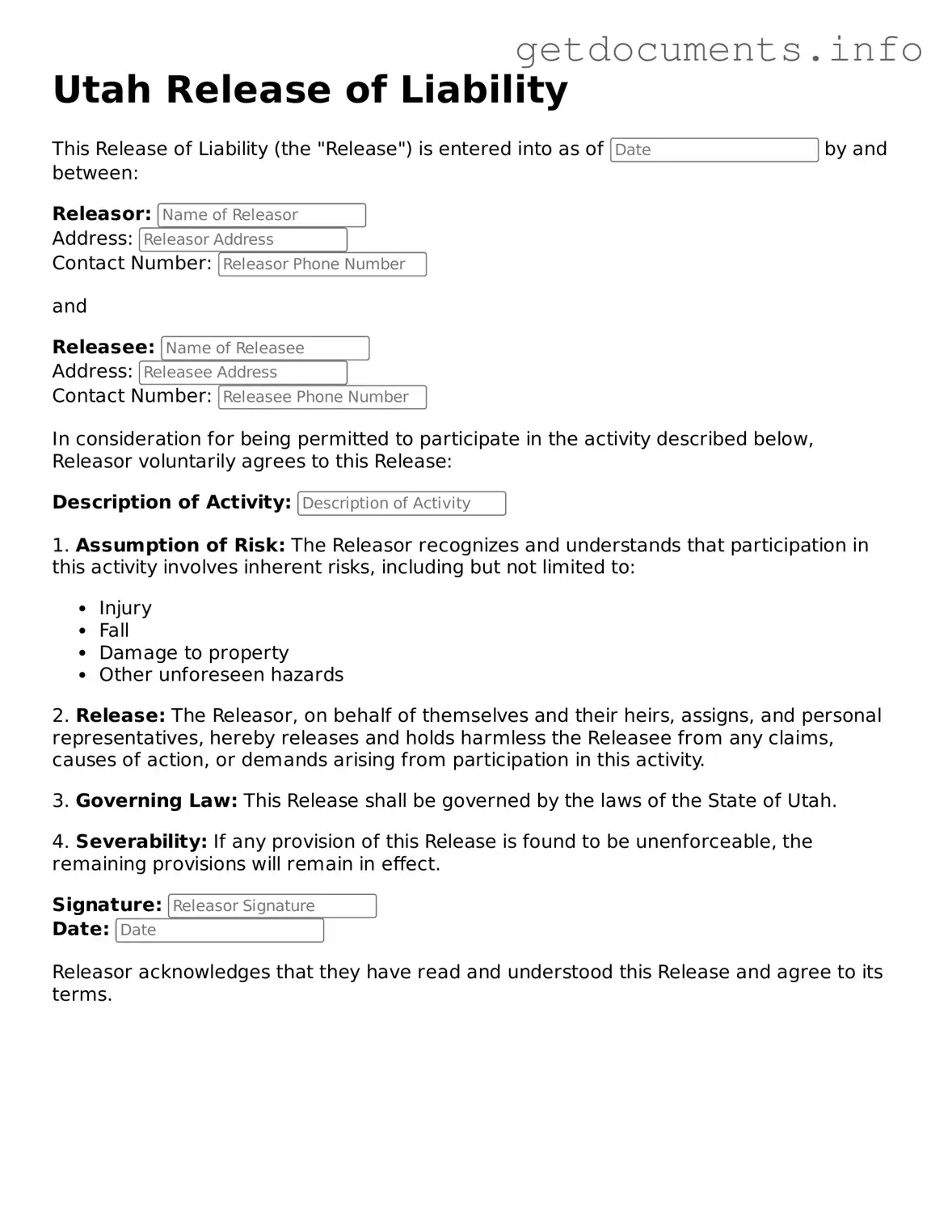Engaging in recreational activities, whether it’s hiking the stunning trails of Utah or participating in adrenaline-pumping sports, often comes with inherent risks. To navigate these risks, many individuals and organizations utilize a Release of Liability form, a crucial document designed to protect against potential legal claims. This form serves as a written agreement where participants acknowledge the risks involved in the activity and agree not to hold the organizers or property owners responsible for any injuries that may occur. By signing this form, individuals take personal responsibility for their safety, which can foster a sense of awareness and caution. In Utah, specific requirements and considerations apply to ensure the form is enforceable, including clear language, voluntary consent, and the absence of coercion. Understanding these elements can empower participants to make informed decisions while enjoying their favorite pastimes. This article will delve into the essential components of the Utah Release of Liability form, its significance, and best practices for both participants and organizers alike.
